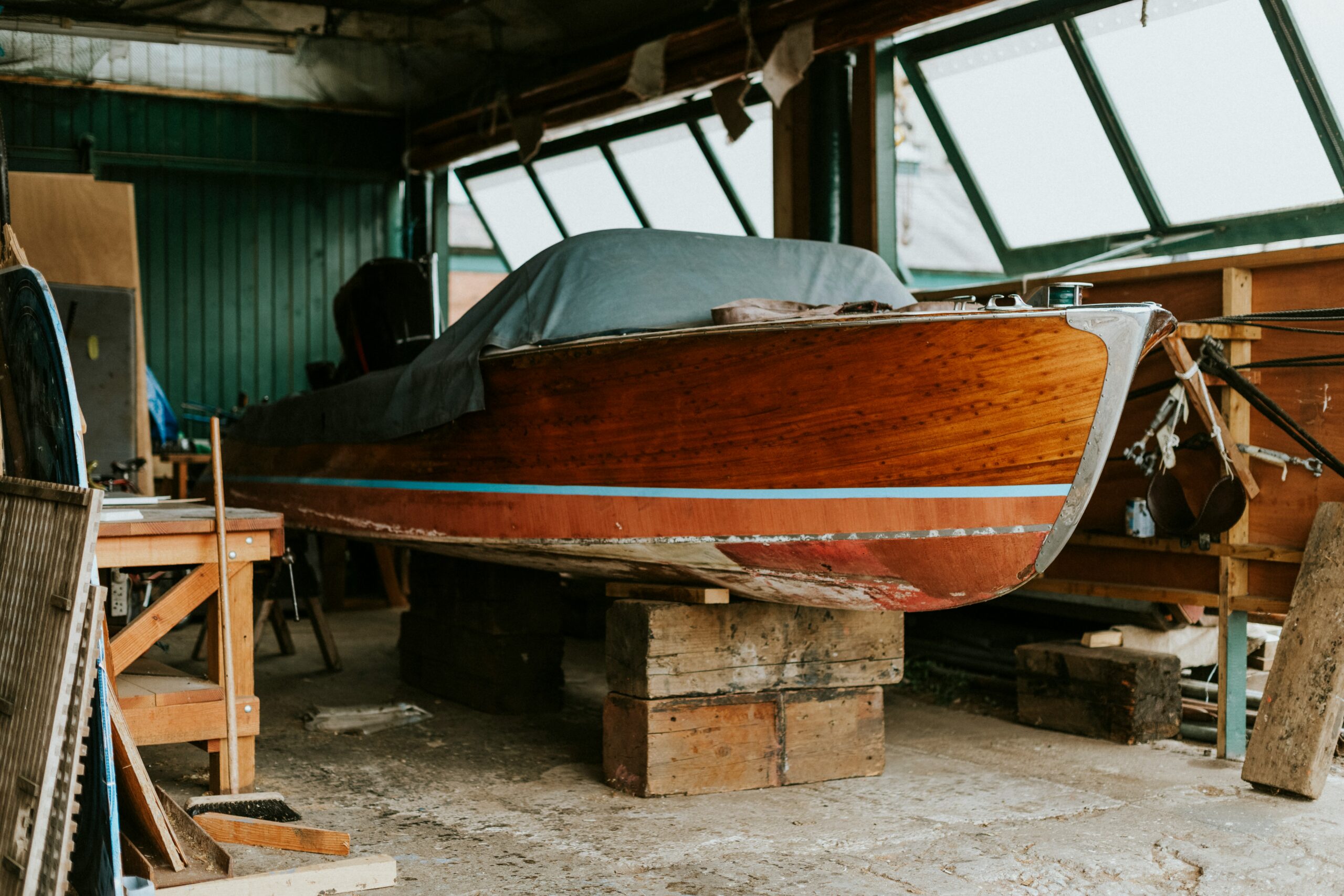
Building a boat is a rewarding endeavor that combines craftsmanship, engineering, and passion. Selecting the right materials is one of the most critical steps in ensuring your boat’s longevity, performance, and safety. With abundant materials available, understanding their properties and applications is key to making informed decisions for your project.
Understanding the Role of Hull Materials
The hull is the foundation of the boat, and its material significantly affects durability, weight, and maintenance. Popular choices include wood, fiberglass, aluminum, and steel. Each has unique advantages and challenges.
Wood, for instance, offers classic aesthetics and easy workability, making it a favorite for traditionalists. However, regular maintenance is required to prevent rot and decay. On the other hand, fiberglass is lightweight, strong, and resistant to corrosion, though it can be more challenging to repair. Aluminum is durable and lightweight, making it ideal for small boats and fishing vessels. Often used for larger ships, steel delivers unmatched strength but is heavy and prone to rust if not adequately protected.
Choosing the right hull material involves balancing cost, intended use, and maintenance requirements. Assess the waters where your boat will operate and consider environmental factors like saltwater exposure, which can accelerate corrosion in certain materials.
Deck and Interior Materials
The deck and interior components are crucial to your boat’s functionality and comfort. These areas require materials that can withstand wear and tear while providing a pleasing aesthetic.
Teak is a popular deck choice due to its natural resistance to water, rot, and pests. Its timeless appeal adds a touch of elegance, but it can be expensive. For a more budget-friendly option, marine-grade plywood offers durability and flexibility. Plywood with waterproof laminates is a smart choice for interior spaces, combining strength with moisture resistance.
Synthetic materials like PVC foam or composite panels are gaining popularity for their lightweight properties and low maintenance. These options are particularly appealing for modern designs where weight reduction is a priority. Whether opting for traditional wood or advanced composites, ensure that all deck and interior materials are properly sealed and treated to maximize lifespan.
Fasteners and Adhesives
While the primary materials for the hull and deck get much attention, the fasteners and adhesives used in boat building are equally vital. High-quality fasteners ensure structural integrity and prevent issues like loosening or corrosion over time.
Stainless steel is a common choice for screws, bolts, and brackets, offering excellent resistance to rust and strength in marine environments. For added durability, consider titanium fasteners, which are lightweight and highly resistant to corrosion, albeit at a higher cost.
Adhesives like epoxy play a crucial role in bonding materials and sealing joints. Epoxy resin provides strong adhesion and waterproofing, making it ideal for laminating wood, filling gaps, or reinforcing connections. Be mindful of the adhesives compatible with your chosen materials, as the wrong type can weaken the structure.
Finishes and Coatings
A well-applied finish or coating enhances your boat’s appearance and protects it from the harsh marine environment. Exposure to salt, UV rays, and fluctuating temperatures can cause deterioration without proper protection.
Marine varnishes are excellent for preserving the natural beauty of wood while providing a durable, waterproof barrier. Gel coats or specialized marine paints are essential for fiberglass and metal boats. These coatings add color and luster and shield against UV damage and corrosion.
Anti-fouling paints are vital for boats that spend extended periods in the water. These paints prevent marine organisms like barnacles and algae from adhering to the hull, reducing drag and improving fuel efficiency. Regular maintenance and reapplication of finishes and coatings will ensure your boat remains in top condition.
Sustainability and Environmental Considerations
Modern boat builders increasingly prioritize sustainability, seeking materials that minimize environmental impact. This approach includes using responsibly sourced wood or using recyclable materials like aluminum.
Bio-based resins and eco-friendly composites are also emerging as alternatives to traditional materials. These options maintain high performance while reducing the reliance on fossil fuels during production. Additionally, reusing or refurbishing materials from old boats can be an eco-conscious choice for DIY enthusiasts.
Choosing sustainable materials aligns with growing awareness of environmental stewardship, ensuring that your boat-building project contributes to preserving the natural beauty of the waters it will navigate.
Testing and Quality Assurance
Before committing to any material, ensure it meets the quality standards required for marine applications. Testing is crucial, especially if you’re venturing into uncharted waters with less common materials.
Inspect materials for defects or inconsistencies and consult with suppliers or professionals to confirm suitability. If possible, conduct small-scale tests, such as applying adhesives to check compatibility or submerging materials to assess water resistance.
Prioritizing quality assurance reduces the risk of structural failures and saves you time and money in the long run. High-quality materials will perform better and require fewer repairs, enhancing your boating experience.
Budgeting for Your Boat-Building Project
Cost considerations often guide material selection. However, it’s essential to strike a balance between affordability and quality. Skimping on critical components can compromise safety and performance, leading to higher expenses for repairs and replacements.
Create a comprehensive budget for all materials, tools, and potential contingencies. Compare prices from multiple suppliers and seek discounts for bulk purchases. Investing in durable, high-quality materials upfront ensures a more reliable and enjoyable vessel.
Final Thoughts
Choosing the best materials for boat building is a multifaceted process that requires careful planning and research. Each decision impacts your boat’s performance, maintenance needs, and lifespan. By understanding the properties and applications of various materials, you can craft a vessel that aligns with your vision and withstands the challenges of marine environments.
Embark on your boat-building journey confidently, knowing that thoughtful material selection will lead to a safe, reliable, and beautiful boat. Whether you’re a seasoned builder or a first-time enthusiast, the right materials set the foundation for a vessel that brings joy and adventure for years.